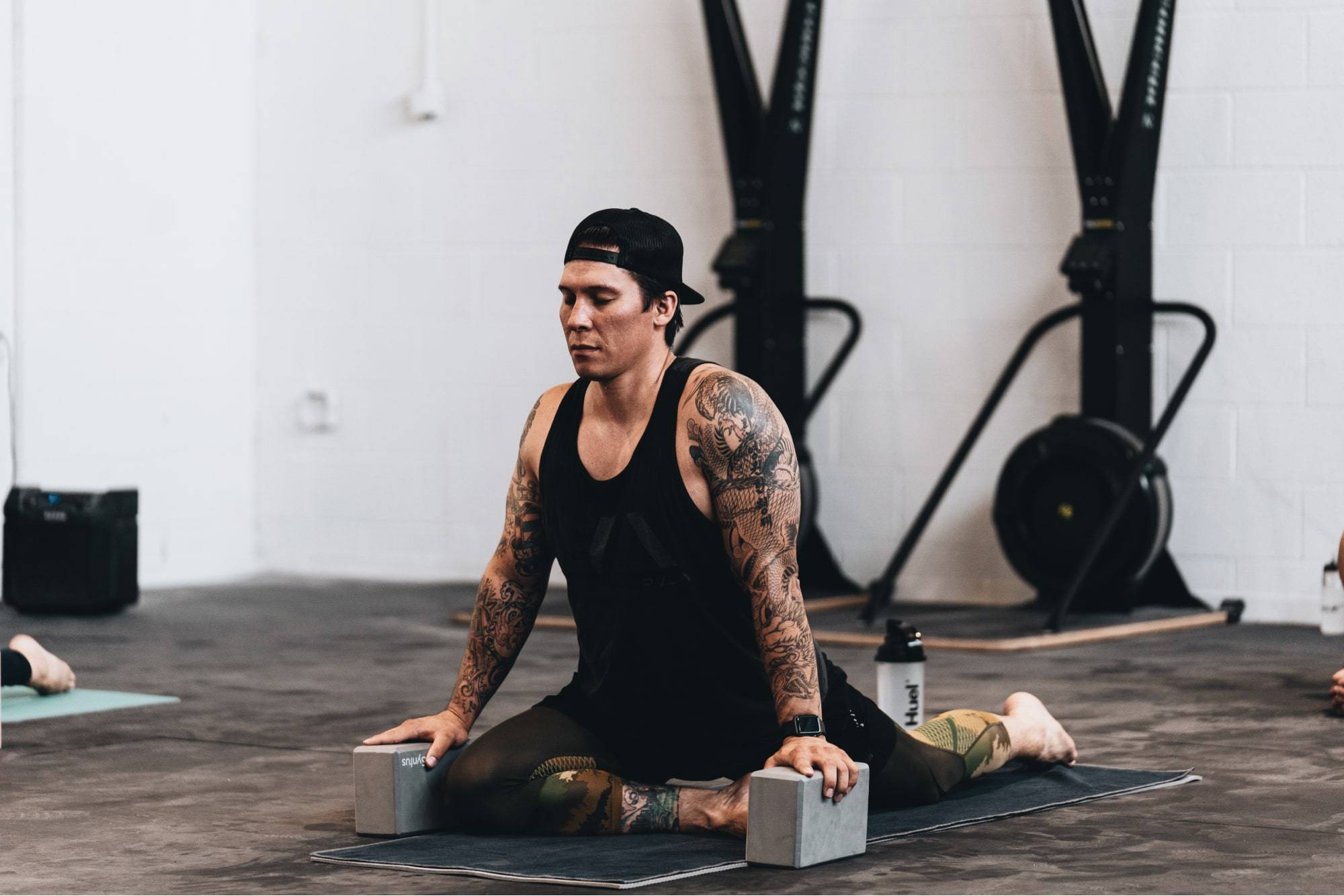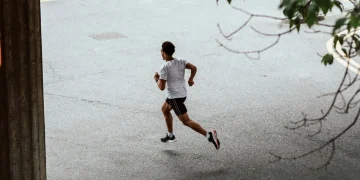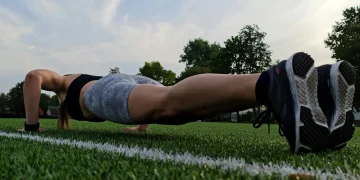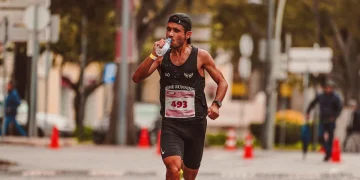In ordinary life, we breathe without thinking about it. But to get through an intense workout with good results, you need to learn how to breathe correctly.
What Happens When You Breathe
First, let’s look at how we breathe. The human respiratory system is divided into two parts:
Upper respiratory tract – nose, mouth, and upper trachea from the pharynx to bronchi. They are responsible for getting air into the lungs.
Lower respiratory tract – trachea, bronchi, bronchioles, and lungs. Located in the chest and protected by the thorax and diaphragm (the muscle that separates the chest and abdomen), these organs are responsible for pumping air and oxygen into the blood.
When inhaling, the chest expands, and the diaphragm with the intercostal muscles contracts (tenses). In this case, the volume of the chest increases, the pressure inside the lungs drops, and the air is pumped inward.
When exhaling, the intercostal muscles relax, and the chest falls. While the volume of the chest drops, the pressure inside rises, and the air is pushed out.
To run well, you must pump enough oxygen in to feed the bloodstream. You can increase the “dose” in two ways:
- Expand the “inlet” so that more air enters the lungs. Here you need to work with the upper respiratory tract.
- Increase lung capacity to take in more oxygen. This is your lower respiratory tract.
Why is it Important to Breathe Correctly?
When we perform exercises while breathing shallowly, oxygen flow into the body is reduced, blood pressure changes, and nausea sets in, causing an overload of the heart, severe dizziness, and even fainting. You may experience tingling in the side or a headache due to the lack of oxygen.
Proper breathing positively affects our well-being and improves the result of training. With sufficient oxygen, fat burns faster, muscles recover better, and fatigue disappears sooner. Therefore, a conscious approach to sports is necessary.
Fundamentals of Correct Breathing During Exercise
Distinguish Between Inhalation and Exhalation
You should inhale through the nose during exercise. It protects against dust and bacteria and humidifies and warms the air. Inhaling through the mouth causes the lungs to “compress” the diaphragm and increase breathing, reducing the flow of oxygen necessary for the oxidation and burning of fats.
You can exhale during exercise in any convenient way. But in any case, keep your breathing steady to not overload the cardiovascular system.
Breathe in Your Belly
The best way to breathe while running is not with the chest but with the help of the diaphragm – a large muscle in the solar plexus area responsible for expanding the lungs. It provides measured deep breathing, which is necessary during most workouts. If you have been breathing from your chest your whole life and do not understand how to suddenly entrust this function to the stomach, here is a simple exercise.
- Sit or lie on your back.
- Place your hand on your stomach to feel it move.
- Count to 8 on each inhale and each exhale.
- Repeat for 3-5 minutes every day.
Breathe Deeply
Deep breathing during physical activity saturates the body with sufficient oxygen, provides ventilation to the lungs, and gives “fuel” to the muscles.
Sometimes habitual shallow breaths are compensated by their frequency. But this does not help to cleanse the blood of carbon dioxide: the lack of oxygen leads to a semi-conscious state, and you lose the ability to exercise.
Rhythm or Random Breathing?
The running community has not yet decided what is considered the norm. A certain category of coaches believes that running without rhythm breathing is impossible.
The rest adhere to the idea that your body knows how to run, and there is no need to accustom it to a rhythm.
In 2013, the University of Utah published a study on the relationship between steps and breathing, which, together with Budd Coates’ bestseller “Running on Air,” shook the foundations of running.
Coates wrote that if you start the rhythm with the same foot each time, you land on the same foot, resulting in leg injuries – goodbye sports career, hello crutches.
Coates questioned why rhythms were needed but then made a knight’s move: he came up with a 3:2 rhythm. In this rhythm, you start and land on a different foot each time.
Everyone said “wow” and began to rewrite articles about running, but then Dennis Bramble, the author of the original study, intervened. He wrote in surprise that the study did not say anything about microtrauma and generally believes that 2:2 is the best rhythm in the world.
If, after all these revelations, you have no idea how to breathe properly, we have a couple of tips.
- Run regularly. The fitter you are, the easier it is for you to breathe. Muscles will learn to absorb oxygen, and lungs will learn to inhale and exhale air more efficiently. Even if you breathe incorrectly, you will do it more effectively every day.
- Do breathing exercises. Lungs can be trained in the same way as muscles. Learn to breathe with your stomach and take deep breaths – all this will help you flutter through stadiums and parks without panting.
- Swim. Breathing is an important part of swimming exercises. So swimming can help you a lot. You will learn to regulate the rate of breathing, coordinating it with the movement of the limbs. Another important habit is the body’s ability to absorb oxygen as much as possible with short, deep breaths.
- Don’t smoke. Smoking damages your lungs and makes it harder for you to breathe deeply. And the situation will only worsen with age.






